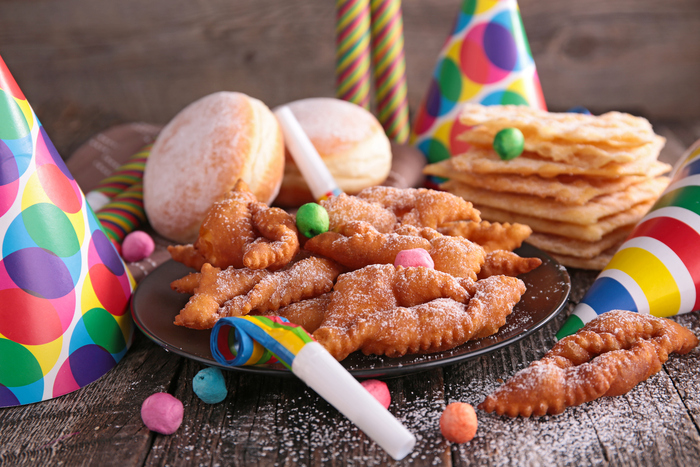Carnival sweets
are irresistible, special, a symbol together with the masks and confetti of the period preceding Lent.
Fried, baked or stuffed, very fragrant.
Their origin dates back to ancient Rome, when the Saturnalia were celebrated with sweets made with flour and egg.
Since then, the recipes (and names) have varied from area to area according to local traditions, but they are all united by an explosion of taste and calories: after all, this is
the "fattest" week of the year
.
But what are the Carnival sweets most loved by Italians?
Chiacchere, bugie, frappe, rags: everyone has their own way of calling them, but they remain the Italians' favorite Carnival dessert
Purchases of Carnival sweets are concentrated during the week of Shrove Thursday and Shrove Tuesday.
Chiacchiere, frappe, crostoli, lies, rags, galani.
Different names, but only one certainty: they are the favorites from North to South. Everly made an analysis of online shopping: chiacchiere represented 47% of purchases of carnival sweets, more than double of frittelle and castagnole, respectively the 22% and 20% of orders.
At Carnival, is every fried food worth it?
We eat a lot of these sweets: 20 million kilos (for a value of 160 million euros).
In the Marches as in Lazio they are called frappe.
In Venice they are called galani and can be found in the food stands of Rio di Cannaregio, the arrival point of the spectacular costume parade along the Grand Canal.
Tradition wants them fried but frappe / chiacchiere cooked in the oven have become widespread (but beware they are falsely less caloric) and also the chocolate variant.
As for the fritters (chestnuts in the south), the variants are also typical, from the very traditional Venetian fritole with raisins to those with apples, there are those stuffed with cream or baked, with ricotta, with chocolate cream.
There are with polenta, with rice flour, with semolina, with bread to recover.
The line between a pancake and a St. Joseph cream puff (the only dessert that doesn't go away with Carnival but 'resists' until Father's Day on March 19) is thin: between a cream pancake and a St. Joseph cream puff filled with cream and fried change very little.
The variants also go crazy among the baked castagnole, delicious balls of fried dough are purchased above all in their "classic" version with only sugar, but there is also the Tuscan one which provides for the addition of alchermes in the dough, the delicious variant limoncello, the Piedmontese ones called bugie with jam filling.
Local sweets to know
Then there are some Carnival sweets that have still remained in their places of origin and are therefore popular only in their area.
Campagna Amica promotes them in regional markets.
These are the tortelli from Lombardy, the fried tagliatelle from Emilia, the Tuscan sugars, the grostoi from Trentino, the scroccafusi from the Marches but also the black and white pignolata from Sicily, the migliaccio from Campania, the aciuleddi from Sardinia, the friciò from Piedmont, the Veneto fried cream.





